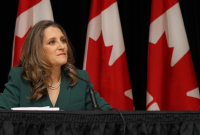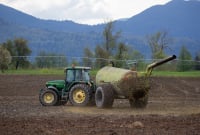Support strong Canadian climate journalism for 2025
The president of the Indigenous Tourism Association of Canada (ITAC) says his organization is facing major cuts that risk setting the industry back a decade.
This week, at the peak of tourism season, Keith Henry informed staff at ITAC that around half the organization’s staff will be laid off in November. He also said smaller provincial organizations will stop receiving funding from ITAC at the beginning of September, leaving their futures in peril.
“It's a major devastating impact. There's a lot of people in the tourism sector that have always viewed Indigenous tourism as unstable,” Henry said. “And so the reputational damage of these impacts are significant for many of the major tourism buyers and sellers.”
Henry points to a lack of investment from both the federal government and larger tourism industry for the cuts. In Budget 2024, Ottawa invested $2.5 million for ITAC, less than 10 per cent of the requested $33 million for operations, marketing and development as part of their 2030 strategy to make Canada a world leader in Indigenous tourism.
The $2.5 million investment for 2024-2025 will enable ITAC to continue growing the Indigenous tourism industry and to develop and implement the ability to generate its own revenue, a statement from Indigenous Services Canada to Canada's National Observer said.
Ottawa also invested $10 million over two years in ITAC, starting last year to deliver grants to micro- and small businesses. They also received $3.6 million as part of the Tourism Relief fund to support businesses after the pandemic, a statement from Innovation, Science and Development to Canada’s National Observer said. Budget 2022 also granted ITAC $4.8 million in funding over two years.
The Government of Canada is dedicated to working with key partners like ITAC to support the growth of the Indigenous tourism industry through Indigenous-led processes.
There are now questions about the survival of organizations that serve smaller markets — like Saskatchewan, New Brunswick and Manitoba — and receive ITAC funding.
Holly Courchene, CEO of Indigenous Tourism Manitoba, told Canada’s National Observer that news of cuts has left everybody scrambling.
“I was completely blindsided,” she said.
Now, Courchene doesn’t know if her organization will be able to deliver on all of its initiatives, nevermind keep all of her small staff employed.
Demand growing for Indigenous tourism
The cuts come while demand continues to increase. One in three international visitors expressed interest in Indigenous tourism, according to a 2021 survey by Destination Canada. A recent access-to-information request by Canada's National Observer also found that the agency is expecting strong growth in Indigenous tourism over the coming decade.
Those internal documents from Innovation, Science and Economic Development Canada reveal that Ottawa has championed Indigenous tourism as a “powerful tool” in Canada’s reconciliation efforts.
“[Indigenous tourism] provides economic opportunities for Indigenous Peoples and enables them to uphold their inherent rights while sharing their cultures, histories and stories in an authentic, respectful manner with Canadians and international visitors,” the document said.
On the ground at Indigenous Tourism Manitoba, Courchene is not hearing that message.
“It always feels like an uphill battle. We're hearing news releases about reconciliation and investments and reconciliation, but we're not seeing that here at the Indigenous Tourism Manitoba level.”
Couchene also worries that if ITAC collapses, its Indigenous authenticity program, the Original Original would be lost with it. The program is designed to ensure that false identity claims that have rocked academia and the arts don’t arise in the tourism sector.
ITAC says the organization will maintain its Original Original program with reduced staff, however, its development and marketing initiatives will face the greatest reductions.
Still, Henry worries about the existential threat ITAC faces. The organization is the fourth iteration of a national Indigenous tourism association, and now Henry is concerned about reputational damage to the sector because of the cuts.
“What’s lost is literally hundreds of millions of dollars for Indigenous tourism businesses in the country,” Henry said.
Indigenous tour operators will survive without ITAC, Henry said, but he believes international awareness and national advocacy will be minimized or eliminated with a constrained ITAC.
A spokesperson for Innovation, Science and Development told Canada’s National Observer that ITAC is one of the “key partners” for supporting Indigenous tourism.
“As a national industry association, ITAC represents the needs and perspectives of Indigenous tourism businesses across Canada,” the statement added. “ITAC plays a key role in promoting Indigenous tourism experiences, raising awareness about Indigenous cultures, traditions, and history.”
Matteo Cimellaro / Canada’s National Observer / Local Journalism Initiative
This article was updated to reflect comment from Indigenous Services Canada.






Comments